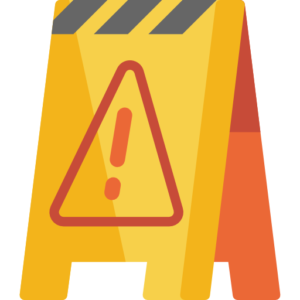The world’s 6th largest company in the world by revenue, Toyota, is a Japanese multinational automotive manufacturer headquartered in Toyota, Aichi and has 3,60,000+ employees worldwide.
Fun facts about Toyota:
- It Was Originally Spelled “Toyoda“
- It is the world’s second largest automotive manufacturer
- It is the world’s market leader in sales of hybrid electric vehicles
- Toyota spends $1 Million every hour for research
- Toyota is investing $1 Billion Into Artificial Intelligence and Robotics
And that’s not it, there is a lot more to this company which is touted as to be the most durable car brand in the world. Let’s check out the SWOT Analysis of Toyota and learn as to what factors helped it in its growth and what factors can pose a problem for the company in the future.
SWOT Analysis of Toyota
 Strengths oF Toyota:
Strengths oF Toyota:
Strengths describe the factors that which the organization is good at and what separates it from its competitors.
–BRAND EQUITY: Over the years, Toyota has been able to build a strong brand equity. The brand is known for its durability, innovation, product quality, and customer service.
–HIGH FOCUS ON RESEARCH AND DEVELOPMENT: The company is considered an innovator, and has a strong focus on research and development. The brand is investing heavily in growing its range of electrified vehicles. It is also investing in the development of human-centric and safe automated driving technology.
–VARIED PRODUCT PORTFOLIO: Toyota has a large and diverse product portfolio and has a vehicle for consumers from every walk of life. Toyota offers sedans, SUVs, sports vehicles, hatchbacks, minivans, station wagon, trucks, and buses. It also offers premium segment cars under the brand name “Lexus”. Apart from this, Toyota is introducing a range of hybrid cars
–STRONG SUPPLY CHAIN AND DISTRIBUTION CHANNEL: Toyota boasts a large and efficient supply chain and distribution network. Each of the vehicles produced by Toyota is made from thousands of parts sourced from suppliers located around the globe. It has 167 main overseas distributors for the distribution of its products around the globe.
 WEAKNESSes of TOYOTA:
WEAKNESSes of TOYOTA:
Weaknesses stop an organization from performing at its optimum level. They are areas where the business needs to improve to remain competitive:
–PRODUCT RECALLS: In the past few years, Toyota has recalled several of its products from the market, which in turn has somewhat created a dent in its brand image. In 2017, Toyota was forced to recall around 2.9 Million vehicles due to faulty airbags.
–WEAK POSITION IN ASIAN MARKETS: Toyota’s position in the Asian markets is still weaker than its competitors.
 THREATS of TOYOTA:
THREATS of TOYOTA:
Threats refer to factors that have the potential to harm an organization in the future. Given the fact, threats give a brand a far-sighted view about the problems that the brand is likely to face in the future, it is one of the most important factors in the SWOT Analysis of Toyota.
–COMPETITIVE PRESSURE: Competition in the automotive industry is cut throat with different players fighting hard to get the maximum market share. Competitive pressure is one of the major threats for Toyota in the market.
–GROWING COST OF RAW MATERIALS AND LABOR: The costs of labor and raw material is growing which has led to high operational costs in the vehicle industry and this has ultimately affected the profitability of the automotive brands.
 OPPORTUNITIES for TOYOTA:
OPPORTUNITIES for TOYOTA:
Opportunities refer to the factors which the organization can use to its favor to grow its market share, sales, brand recognition etc. It’s the second most important factor in
–EXPANDING TO OTHER GEOGRAPHIES (ASIAN MARKETS): With the vast portfolio of products that Toyota has, the brand has a huge potential to expand its operations in other developing countries. Investing more in these geographies will be extremely fruitful for the brand.
–HYBRID AND ELECTRIC CARS: The future of vehicles is electric, with increasing pollution and crude oil prices, the need for electric cars is on the rise. Toyota should be looking on investing heavily in the electric car segment as it poses a huge opportunity for the brand.
—AUTONOMOUS VEHICLE TECHNOLOGY: Bringing the first autonomous vehicle to the market has become the prime objective of many companies be it automotive brands like Tesla or non-automative brands like Google. Toyota is a part of this trend as well, the brand investing $1 Billion Into Artificial Intelligence and Robotics to make the dream of the producing the first autonomous vehicle possible.
Conclusion
There are a number of challenges that Toyota faces but still, it’s the strong brand equity, current market position, and the opportunities that pose a strong growth in the future for the brand.
This concludes the SWOT analysis of Toyota.
Related articles:
Check out the BCG Matrix of Coca-Cola and SWOT analysis of Coca-Cola and Marketing mix of Coca-Cola
Learn more about the Swot analysis of Amul
Check out the swot analysis of Samsung
Explore more about SWOT analysis of KFC
Read more about the SWOT analysis of Mcdonald’s
Check out the swot analysis of Patanjali
Read more about the swot analysis of Walmart
Read more about the swot analysis of Pepsi, Marketing mix of Pepsi and BCG Matrix of Pepsi

 Strengths oF Toyota:
Strengths oF Toyota: WEAKNESSes of TOYOTA:
WEAKNESSes of TOYOTA: THREATS of TOYOTA:
THREATS of TOYOTA: OPPORTUNITIES for TOYOTA:
OPPORTUNITIES for TOYOTA: